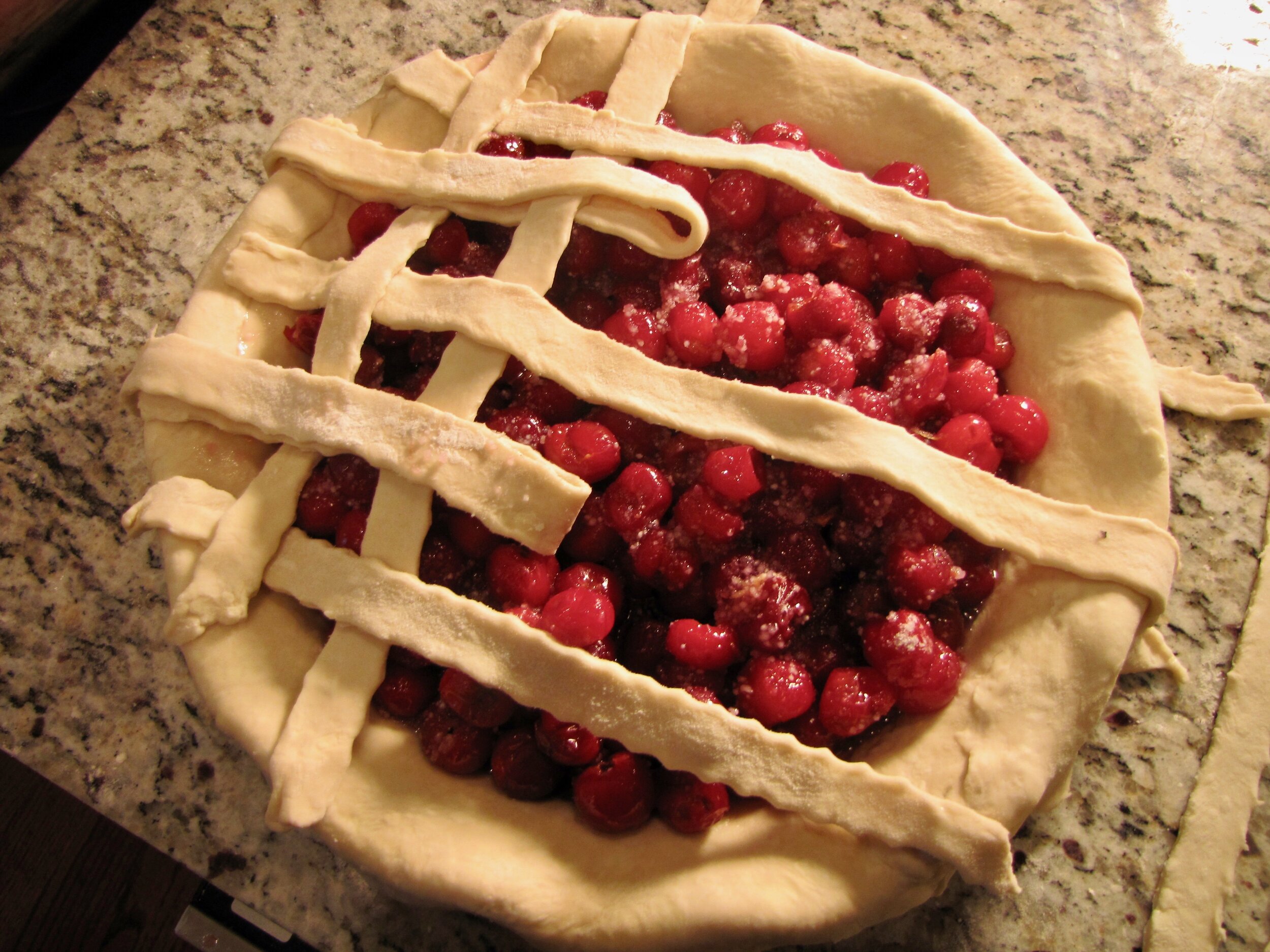Perfect pie crust
Tender and flaky is the holy grail of pie crust. Sure, we want it filled with the best ripe, flavorful, local fruit, rich, creamy, delicate quiche and custards, or surrounding chicken and vegetables in silken gravy for pot pie, but let's face it, the true measure of great pie is in the crust.
I spent a year baking several dozen pies to master pie crust and I learned a few things that can save you the pain of my first crust. Here are the basics:
Always use salt, even in a sweet crust. When I judged a pie contest the most consistent criticism of the judges across 32 pies was the lack of salt in the crust. Even if the texture is perfect, without salt it is noticeably bland.
Handle it gingerly. Unlike the doughs for bread or dumpling wrappers, we don't want to develop the gluten in pie dough. It makes the crust tough, so mix it quickly with as little handling as possible.
There are three basic ingredients in pie dough: flour, water and fat - usually butter (plus salt and sometimes sugar). Quality matters. Buy good quality, farm-fresh butter. You will taste it.
THIS IS THE SINGLE MOST IMPORTANT TIP: Keep your butter, flour and water cold. The structure of pie dough comes from small pieces of butter that have not been filly blended with the flour and water. When the crust goes in a hot oven the butter melts, the water turns to steam and expands leaving those small pockets of air in the crust that give us flaky texture. Cold butter will stay in those separate pieces.
Now you will understand why my first pie crust was an unmitigated disaster. I was making my first homemade crust for a pie with beautiful, local, tart cherries from Marvin Ogburn at Long Meadow Farms. The sun was shining in the kitchen window, its warm rays touching down on our roommate's 1950's metal top kitchen table. I dusted it with flour and began to roll out the dough.
So...remember that tip about keeping things cold? On the warm table my pie dough quickly turned into a sticky paste. I managed to scrape irregular patches off the table and piece them together in a pie dish. The crust was flavorful but dense. This frustrating disaster took an extra hour, fueled by the exclamation of words I wouldn't repeat in front of my mother. My friends Craig and Annie, who never expect an onetime arrival from me anyway, were understanding when I showed up late with the still warm pie.
Ready to go? Before you start, let me ask you a question: Do you play tennis? No? Well, I'm going to send you a trifold brochure on how to play. You'll have 15 minutes to read it and then we're going to hit the courts. How will that go? You're laughing right now, aren't you?
You'll have fun playing tennis, enjoying the exercise and fresh air. You are not, however, ready for the US Open. So, get in the kitchen and have fun making this pie crust. It will be delicious, you will learn a lot and have the satisfaction that baking-from-scratch brings. You will not, however, be a contestant on the next season of the Great British Baking Show. And that, my friends, is okay. Keep baking and keep getting better. But today? Have fun.
Perfect pie crust
Makes two crusts or a top and bottom crust.
Cold water, cold butter, working quickly and using salt are the keys to this tender, flaky, flavorful crust.
Ingredients:
12 1/2 oz (about 3 cups) all purpose flour
1 tbs sugar if making a sweet pie
2 tsp salt
8 oz (16 tbs, 1 cup or two sticks) chilled butter, cut in 1/2" cubes
1/2 cup water chilled with a few ice cubes
1 egg, lightly whisked
Directions:
Make pastry: In a large bowl or the bowl of a food processor, whisk together flour, sugar if using, and salt. Add butter pieces and cut together using the pulse setting of the food processor (about six 1 second pulses) or by hand with a pastry cutter or two butter knives. Process until butter resembles peas and crackers. If using a food processor, at this point transfer to a large bowl.
Add 1/3 cup water and stir together with a fork until a dough begins to form. Squeeze dough in one hand. If it crumbles when you open your hand then add more water, 1 tbs at a time. Turn the dough onto your counter and knead several times until the dough comes together. Divide in half, shape each portion into a disk, wrap in plastic wrap and chill for one hour in the refrigerator.
When chilled, lightly flour a counter and your rolling pin and roll out, usually to 1/8" thick. You want a cool surface so a granite, marble or concrete counter is ideal but not necessary. Avoid using the counter above a recently run dishwasher or anywhere in direct sunlight.
Shape your pie, tart, hand pies, pot pie or galette and chill in the refrigerator for 20 minutes before baking. Bake in a 400 F oven.
TIP: In the summer, when the kitchen is really warm, every 6-8 passes of the rolling pin transfer the dough to a sheet pan and chill in the freezer or refrigerator for a few minutes.





